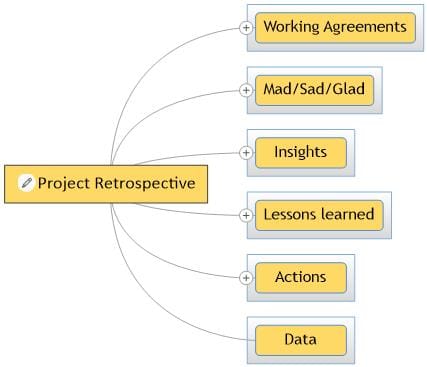Templates
Project Sprint Retrospective
Reviewing progress of a project throughout delivery is essential to make sure all is on track and there are no issues in the team. Effective communication ensures everyone can input.
A Sprint Retrospective meeting is a good way to facilitate those discussions, by taking into account what is working and what isn’t. A Sad, Glad, Mad structure to the meeting creates an informal style.

Introduction: Welcome to our blog where we explore the pivotal role of Sprint Retrospectives in project management. In this post, we’ll delve into how Sprint Retrospectives can significantly enhance project performance and foster continuous improvement within your team.
Why Sprint Retrospectives Matter: Sprint Retrospectives are a critical component of the Agile methodology, providing teams with an opportunity to reflect on their work, identify areas for improvement, and implement actionable changes. Regular retrospectives enable teams to adapt and refine their processes, leading to increased efficiency and productivity.
The Process: During a Sprint Retrospective, team members gather to review the recently completed sprint. They discuss successes, challenges, and potential improvements moving forward. This structured approach encourages open communication and ensures that all team members have a voice in the process.
Key Benefits:
- Continuous Improvement: Retrospectives foster a culture of continuous improvement, driving innovation and progress.
- Team Collaboration: Involving all team members in the retrospective process fosters collaboration and strengthens relationships.
- Increased Accountability: Retrospectives hold team members accountable, promoting ownership and responsibility.
- Adaptability: Teams can quickly adapt to changing circumstances and address challenges through retrospectives.
Best Practices:
- Set Clear Objectives: Define clear objectives to keep discussions focused and productive.
- Encourage Open Communication: Create a supportive environment where team members feel comfortable sharing ideas.
- Follow Through on Action Items: Assign specific action items with deadlines for effective implementation.
- Celebrate Successes: Take time to celebrate achievements, reinforcing positive outcomes.
Conclusion: In conclusion, Sprint Retrospectives are instrumental in maximizing project performance and driving continuous improvement in Agile teams. By embracing reflection, collaboration, and adaptability, teams can leverage retrospectives to achieve greater success in their projects. Start integrating Sprint Retrospectives into your project management process today and unleash your team’s full potential.
Download our template today to get started
